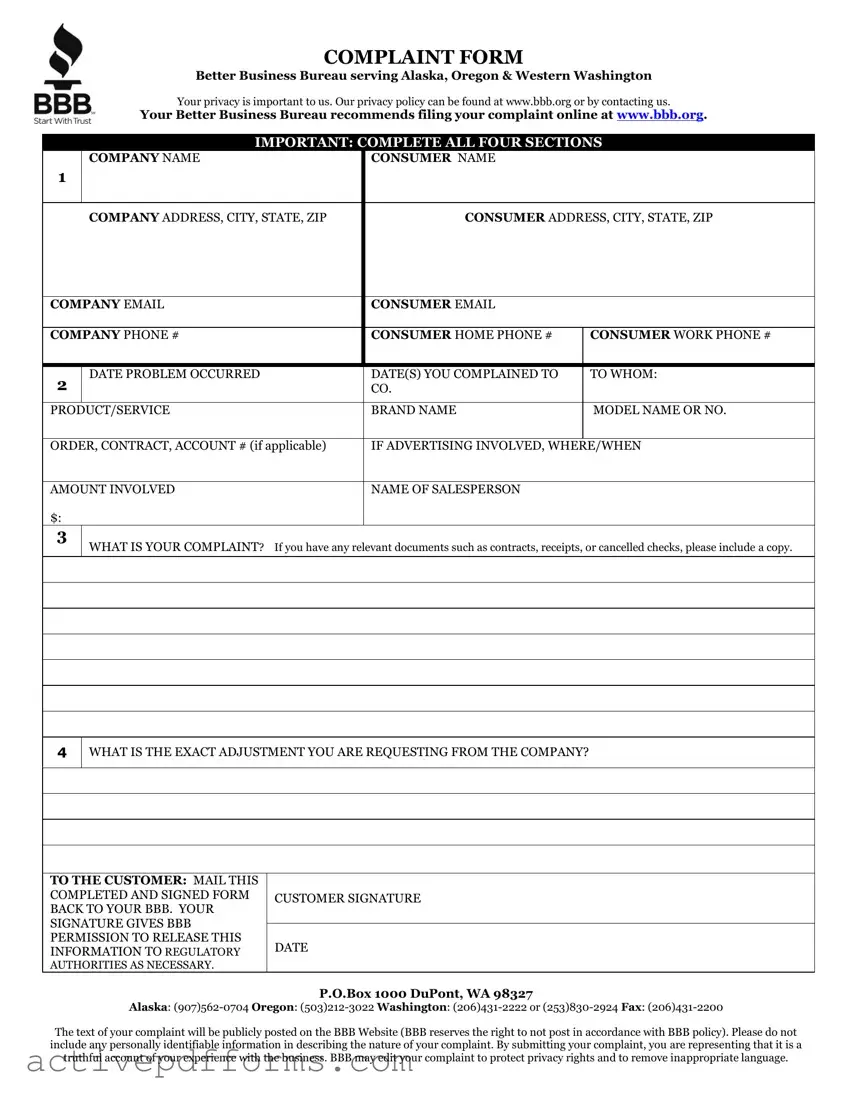In today's commercial landscape, the importance of maintaining a healthy relationship between businesses and consumers cannot be overstated. In instances where discrepancies arise, it is essential that there exists a platform for grievances to be aired and, ideally, resolved. The Better Business Bureau (BBB) Complaint Form serves this very purpose, providing a streamlined channel for consumers to voice their concerns regarding the services or products provided by businesses. This form is not just a tool for filing complaints; it represents an opportunity for companies to address issues, maintain their reputation, and improve customer satisfaction. Through the submission process, detailed information about the complaint, including the nature of the issue, personal experiences, and desired outcomes, is collected. This aids the BBB in facilitating communication between the consumer and the business to find a resolution. As such, the BBB Complaint Form is more than a mere document; it is a pivotal element in the consumer-business interaction, ensuring that standards are upheld and both parties’ voices are heard.

